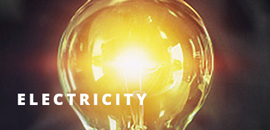PROGRESS REPORT
During this past fiscal period, the Texas Department of Public Safety (TXDPS) has retrofitted many areas with new lighting fixtures that will reduce light consumption by more than 70 percent. Additional floor renovations continue at TXDPS, and the Department is switching out many shower heads and toilets, reducing the flow rate by 40 percent. TXDPS has also converted to DDC (Direct Digital Controls)/BAS (Building Automated Systems) in many buildings, allowing for a greater control and maintenance of energy usage throughout. TXDPS uses ENGIE Platform services to monitor utility costs and help DPS identify utilities that have sudden spikes in usage. Additionally, TXDPS is working with Austin Energy at their HQ facility to seek new opportunities for further electricity reductions. TXDPS continues to offer a telecommute option for some employees, which aids in lowering energy consumption.
GOALS
The Department's energy conservation goals are aligned with Senate Bill 898, passed in 2011 by the 82nd Texas Legislature. This bill calls for a reduction of electrical consumption by 5 percent per annum for 10 years beginning Sept. 1, 2011. As the Department continues to grow to service the expanding needs of Texas citizens, a ratio of occupied space (total square footage) relative to energy consumption is the metric by which conservation measures must be judged. Regarding natural gas and water, a reduction goal of 2 percent has been established, also utilizing ratios as the method of measurement.
| Utility | Target Year | Benchmark Year | Percentage Goal |
|---|---|---|---|
| Water | 2028 | 2020 | 2 |
| Electricity | 2028 | 2020 | 2 |
| Transportation Fuels | 2028 | 2020 | 2 |
| Natural Gas | 2028 | 2020 | 2 |
STRATEGY FOR ACHIEVING GOALS
Electricity
During building renovations, TXDPS will transition from fluorescent bulbs to LED lighting wherever possible. This reduces the amount of electricity used by the fixture itself, in addition to reducing the heat load on the HVAC system. Occupancy sensors and dimmer switches are also being installed where feasible to mitigate energy waste in unoccupied areas.
Other prospective conservation measures being considered include:
- Solar film on windows.
- Reflective roof coatings.
- Insulation upgrades to IECC standards during roof replacements.
- Use of increased R-value insulation.
- Transition to on-site renewable energy sources (solar, wind, geothermal).
Water
TXDPS will continue to replace existing hardware with more efficient, low-flow devices when opportunities are presented (e.g. sink, faucet and toilet replacements). The Department is also implementing Xeriscaping on all new designing and layouts.
IMPLEMENTATION SCHEDULE
TXDPS makes an effort to implement energy conservation measures whenever possible. As renovations occur in agency buildings, the Department will take opportunities to install energy conservation devices whenever feasible and when resources allow.
AGENCY FINANCE STRATEGY
The Department will continue to request funding from the Legislature for energy conservation endeavors. Additionally, TXDPS will seek opportunities to obtain grants/rebates (for conservation device installation) from energy providers and municipalities.
EMPLOYEE AWARENESS PLAN
The Department's General Manual clearly outlines conservation measures in Chapter 16, Building Use and Energy Conservation. Additionally, ideas, policies and new protocols are sometimes disseminated through agency-wide email.






